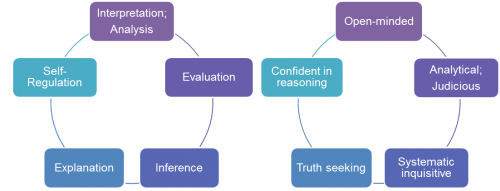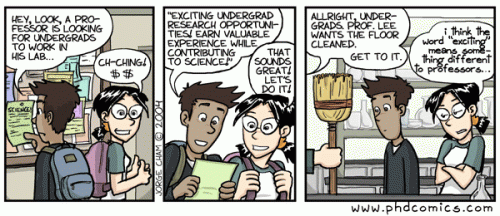The following entry from the 2012-2013 Teaching Issues Writing Consortium: Teaching Tips was contributed by Julie Frese, Ph.D. at the University of the Rockies.
———————————————————–
According to Dempsey & Sales (1993), the motivational approach to feedback is based on the belief that “…letting people know how well they are performing a task acts as an incentive for greater effort in the future” (p. 4). Creemers (1996) cited the use of feedback and corrective instruction as one of the instructor behaviors that contribute to better student outcomes.
Learners tend to fall on a goal continuum that ranges from ego-involved (performance orientation) to task-involved (learning orientation). If they are ego-involved, they have strong incentives to demonstrate and display their abilities. If learners are task-involved, they possess strong incentives to learn, gain skills, and improve mastery. If a learner receives no cues or feedback to select or favor one goal orientation over another, they act according to their predispositions (Dempsey & Sales, 1993; Hattie and Timperley, 2007).

Cartoon by David Sipress
Typically, instructor feedback has been viewed as a useful technique to assist learners. For example, learner thought patterns and/or actions can be redirected and areas of strength or weakness can be communicated. According to Hoska (1993), it is possible to provide feedback to learners that can influence their goal orientations and maximize their incentive to perform. Approaches that have been successful include: modifying the learner’s view of intelligence, altering the goal structure of the learning task, and controlling the delivery of learning rewards. Hoska (1993) also believes feedback should help learners understand that abilities are skills that can be developed through practice, effort is key to increasing one’s skills, and mistakes are not failures; rather they are part of the skill-development process.
In order to provide effective feedback, the facilitator needs to reflect upon his/her approach to the teaching-learning process. For example, does the instructor view learning from a constructivist perspective or approach it in a more traditionalist fashion? If constructivist teaching practices are used, the emphasis is on helping learners internalize and reshape, or transform new information. This transformation occurs through the creation of new understandings (Jackson, 1986; Gardner, 1991). New cognitive structures can emerge from these understandings. In contrast, the traditional approach has been deemed to be more of a process where the learning process involves repeating or miming new material or information (Jackson, 1986). These two different approaches to learning will determine the instructional strategies used by the instructor, and in turn will impact the level of learner motivation. Feedback can also be organized around different types of interaction: learner-to-learner, learner-to-instructor, learner-to-content, and learner-to-interface (Hillman, Willis, & Gunawardena, 1994).
White and Weight (2000) discuss the issue of the online student who needs extra motivation, and propose various strategies that the instructor/facilitator can use to provide this motivation. These range from sending a direct note to the student to asking all students to relate their learning to their current work experience. The authors also stress the importance of the sensitive nature of these actions. In addition, they believe “Feedback that is timely is far more motivational and beneficial to performance improvement than delayed feedback. Thus, online feedback is best when it is prompt” (p. 63).
Formative feedback potentially “modifies a student’s thinking or behavior for the purpose of learning, and summative feedback assesses how well a student accomplishes a task or achieves a result for the purpose of grading” (White & Weight, 2000, p. 168). Since formative feedback influences thought and behavior, it is more motivational. During this process students are asked to continue doing what they have been doing, ask questions, participate, stay on topic, and/or modify their thinking or approach (when and if necessary). White & Weight (2000) also stress that feedback should be multidimensional, non-evaluative, supportive, student controlled, consistent, constructive, objective, timely, and specific. They cite some of the best practices used by online instructors for providing constructive formative and summative feedback:
- Focus on specific behavior rather than on the online student
- Take the needs of the online student into account
- Direct feedback toward behavior the online student can change
- Help online students to “own” the feedback
- Give timely online feedback
- Check online feedback for clarity
- Consider online feedback as part of an ongoing relationship (White & Weight, 2000, p. 173-4).
As we strive to provide constructive and substantive formative and summative feedback, it is essential to understand its impact on learner motivation. This knowledge will allow us to utilize more effective instructional practices and provide more meaningful learning experiences, while also improving our course design.
References
Creemers, B. (1996). The school effectiveness knowledge base. In Bollen, R., Creemers, B., Hopkins, D, Lagerweij, N., Reynolds, D., and Stoll, L. Making good schools: Linking school effectiveness and improvement. London: Routledge.
Dempsey, J.V. & Sales, G.C. (1993). Interactive instruction and feedback. Englewood Cliff, NJ: Educational Technology Publications.
Gardner, H. (1991). The unschooled mind: How children think and how schools should teach. New York: Basic Books.
Hattie, J. & Timperley, H. (2007). The power of feedback. Review of Educational Research. 77(1). 81-112. London: Sage Publications. doi: 10.3102/003465430298487
Hillman, D. C. A., Willis, D .J. & C.N. Gunawardena (1994). Learner-Interface Interaction in Distance Education: An Extension of Contemporary Models and Strategies for Practitioners. The American Journal of Distance Education. 8(2), 30-42.
Hoska, D.M. (1993). Motivating learners through CBI feedback: Developing a positive learner perspective. In Dempsey, J.V. & Sales, G.C. (Eds.), Interactive instruction and feedback (pp. 105-132). Englewood Cliffs, NJ: Educational Technology Publications.
Jackson, P.W. (1986). The practice of teaching. New York: Teachers College Press.
Sales, G.C. & Johnston, M.D. (1988). Graphic fidelity, gender, and performance in computer-based simulations. (Research Bulletin #1, Improving the Use of Technology in Schools: What We Are Learning). Minneapolis, MN: MECC/UM Center for the Study of Educational Technology.
White, K. W. & Weight, B. H. (2000). The online teaching guide: A handbook of attitudes, strategies and techniques for the virtual classroom. Boston, MA: Allyn and Bacon.
Submitted by Julie Frese, Ph.D.
University of the Rockies
Julie.Frese@faculty.rockies.edu
http://rockies.edu




